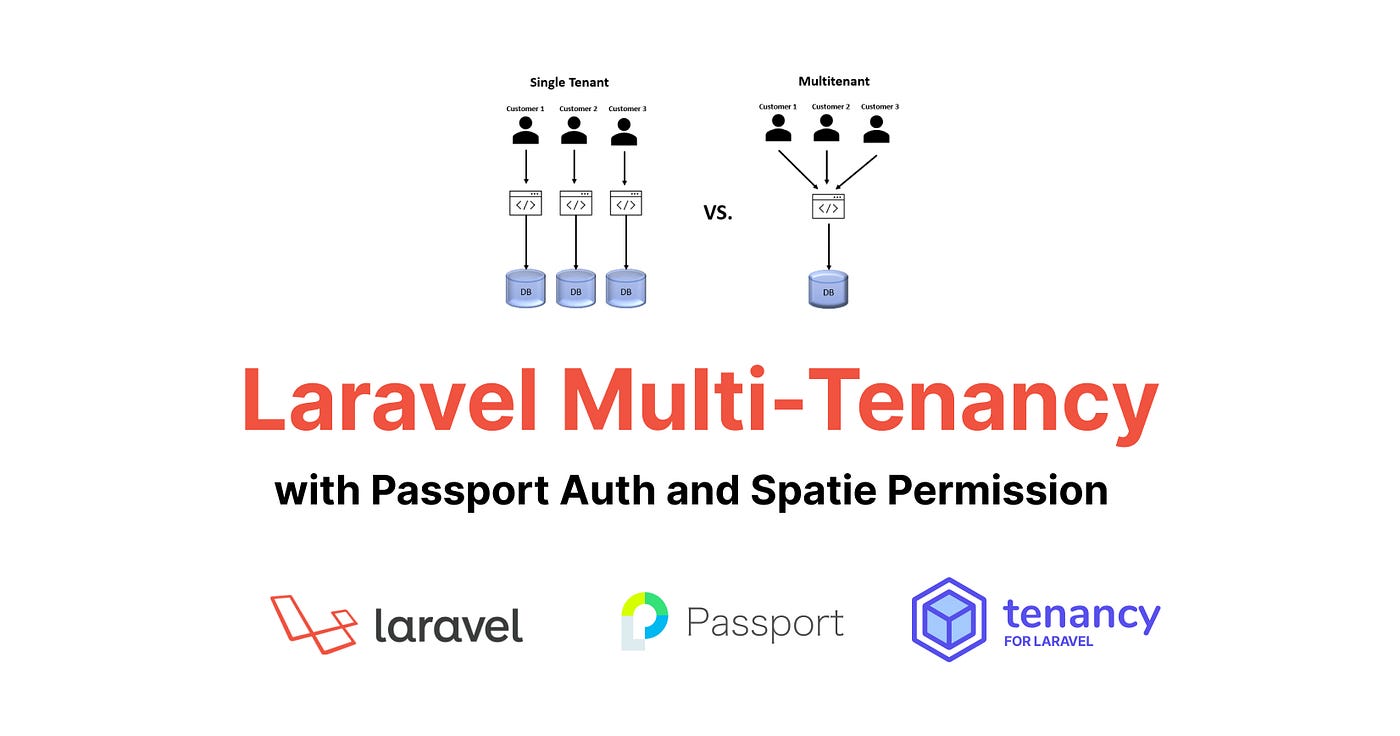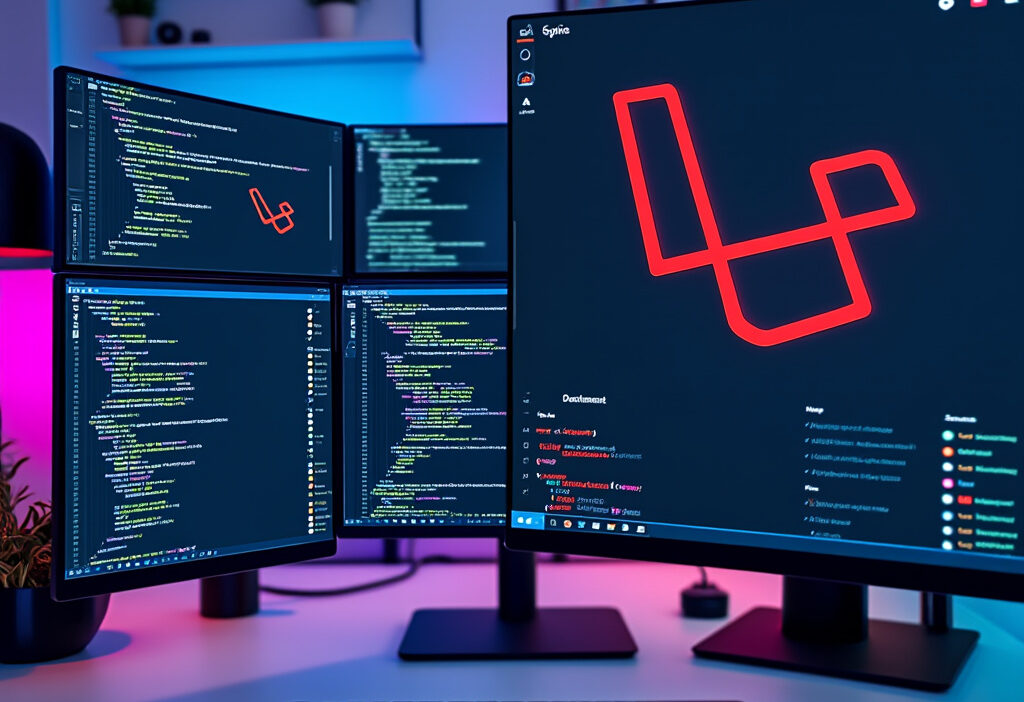Building a Multi-Tenant SaaS in Laravel with Spatie’s Package
Building a multi-tenant SaaS application can be a complex task, but with the right tools and strategies, it becomes manageable. This article explores how to leverage Laravel and Spatie’s package to create a scalable and efficient multi-tenant SaaS. We will delve into the architecture, implementation, and best practices to ensure your application is robust and maintainable.
Understanding Multi-Tenancy in SaaS Applications
Multi-tenancy is a foundational architectural pattern for SaaS applications, enabling a single application instance to serve multiple tenants while ensuring data isolation and security. In a multi-tenant setup, tenants share the same infrastructure, such as databases, servers, and application code, but their data remains logically separated. This approach optimizes resource utilization, reduces operational costs, and simplifies maintenance, making it ideal for scalable SaaS solutions.
There are three primary types of multi-tenancy: database-level, schema-level, and table-level. In database-level multi-tenancy, each tenant has a dedicated database, offering strong isolation but higher infrastructure costs. Schema-level multi-tenancy uses a single database with separate schemas for each tenant, balancing isolation and resource efficiency. Table-level multi-tenancy stores all tenant data in shared tables, using tenant identifiers to segregate data, which maximizes resource efficiency but requires careful design to ensure data integrity.
Implementing multi-tenancy in Laravel with Spatie’s package simplifies this process. The package provides tools to manage tenant-specific configurations, database connections, and data isolation seamlessly. By leveraging these features, developers can focus on building scalable and efficient SaaS applications without reinventing the wheel. This approach ensures that tenants experience a secure, isolated environment while benefiting from shared resources.
Introduction to Laravel and Spatie’s Package
Laravel is a robust PHP framework designed to simplify web application development with its expressive syntax and powerful tools. It provides an elegant structure for building applications, offering features like Eloquent ORM, Blade templating, and Artisan CLI, which streamline development workflows. Laravel’s modular architecture and extensive ecosystem make it an ideal choice for creating scalable SaaS applications. However, building a multi-tenant SaaS requires additional capabilities, which is where Spatie’s package comes into play.
Spatie’s laravel-multitenancy package extends Laravel’s functionality to support multi-tenancy seamlessly. It provides tools to manage tenant-specific configurations, databases, and resources, ensuring data isolation and scalability. The package supports various multi-tenancy strategies, such as separate databases or shared databases with tenant-specific prefixes, allowing developers to choose the approach that best fits their application’s needs. By integrating Spatie’s package, developers can handle tenant identification, routing, and database connections efficiently, reducing the complexity of building multi-tenant systems.
Together, Laravel and Spatie’s package create a powerful foundation for developing multi-tenant SaaS applications. Laravel’s flexibility and Spatie’s specialized tools enable developers to focus on building features while ensuring scalability and tenant isolation. This combination is particularly valuable for SaaS applications, where managing multiple tenants securely and efficiently is critical. In the next chapter, we’ll dive into setting up your Laravel environment, a crucial step before implementing multi-tenancy.
Setting Up Your Laravel Environment
Setting up your Laravel environment is the foundation for building a robust multi-tenant SaaS application. Start by ensuring your system meets Laravel’s requirements, including PHP 8.0 or higher, Composer, and a supported database like MySQL or PostgreSQL. Use Composer to create a new Laravel project by running composer create-project laravel/laravel project-name. This command installs Laravel and its dependencies, setting up the initial structure of your application.
Next, configure your .env file to define environment-specific settings. Update the database credentials to match your local or development database setup. For example, set DB_CONNECTION=mysql, DB_HOST=127.0.0.1, DB_PORT=3306, and provide your database name, username, and password. Run php artisan migrate to create the necessary tables in your database, ensuring the connection is working correctly.
To streamline development, consider using Laravel Sail or Laravel Homestead. Sail provides a Docker-based environment, while Homestead offers a pre-packaged Vagrant box. Both tools simplify dependency management and ensure consistency across development environments. Finally, install debugging tools like Telescope or Debugbar to monitor your application’s performance and troubleshoot issues effectively. With your environment ready, you’re set to integrate Spatie’s package in the next step.
Installing and Configuring Spatie’s Package
With your Laravel environment ready, the next step is to integrate Spatie’s laravel-multitenancy package, a powerful tool for enabling multi-tenancy in your application. Begin by installing the package via Composer using the command composer require spatie/laravel-multitenancy. Once installed, publish the package’s configuration file using php artisan vendor:publish –provider=”Spatie\Multitenancy\MultitenancyServiceProvider”. This will generate a multitenancy.php configuration file in your config directory, where you can define tenant-specific settings.
In the configuration file, you’ll need to specify the tenant model, which represents individual tenants in your system. By default, Spatie’s package assumes a Tenant model, but you can customize this to fit your application’s needs. Additionally, configure the tenant identification logic, such as identifying tenants by subdomain, domain, or request parameter. This ensures that the correct tenant context is loaded for each request.
Next, set up the tenant database connection. Spatie’s package supports both single-database and multi-database setups. For single-database setups, you’ll need to configure the package to use a unique identifier, such as a tenant_id, to isolate tenant data. For multi-database setups, define how the package should switch database connections dynamically based on the tenant. Finally, run the necessary migrations to create tenant-specific tables and ensure your application is ready for the next step: designing a robust database schema for multi-tenancy.
Designing the Database Schema for Multi-Tenancy
Designing the database schema for a multi-tenant SaaS application is a foundational step that directly impacts scalability, performance, and maintainability. A well-structured schema ensures tenant isolation while optimizing resource usage. When using Spatie’s package in Laravel, you have the flexibility to choose between shared database and separate database strategies, each with its own design considerations.
For a shared database approach, a single database serves all tenants, with tenant-specific data partitioned using a tenant_id column. This method is cost-effective and simplifies schema management but requires careful indexing and query optimization to avoid performance bottlenecks. Ensure that every table storing tenant-specific data includes the tenant_id column, and use foreign key constraints to maintain data integrity.
In a separate database strategy, each tenant has its own database, providing stronger isolation and easier scalability. This approach is ideal for applications with strict data privacy requirements or high tenant-specific customization needs. However, it increases complexity in schema management, as migrations and updates must be applied across multiple databases.
Regardless of the strategy, consider implementing a centralized tenant management table to track tenant-specific configurations, such as database connections or custom domains. Use Laravel’s migration system to automate schema updates and ensure consistency across tenants. Proper indexing, partitioning, and caching mechanisms are essential to maintain performance as your application scales.
Implementing Tenant Isolation
Implementing tenant isolation is a critical step in building a secure and scalable multi-tenant SaaS application. With Spatie’s package, Laravel developers can efficiently manage tenant separation at the middleware, routing, and database levels. Middleware plays a pivotal role in identifying the current tenant and ensuring that all subsequent requests are scoped to that tenant. By creating a custom middleware, you can resolve the tenant based on the request’s domain, subdomain, or a custom header, and then bind the tenant to the application context.
For routing, Spatie’s package allows you to define tenant-specific routes dynamically. This ensures that routes are only accessible to the authenticated tenant, preventing unauthorized access. You can also group routes under a tenant-aware prefix, simplifying route management while maintaining isolation.
At the database level, tenant isolation is achieved by scoping queries to the current tenant. Spatie’s package integrates seamlessly with Eloquent, enabling automatic filtering of queries based on the tenant’s unique identifier. This ensures that no tenant can access another’s data, even if the query logic is flawed. Additionally, you can use database connections or schemas to physically separate tenant data, further enhancing security and performance. By combining these techniques, you can build a robust multi-tenant system that prioritizes data integrity and scalability.
Managing Tenant-Specific Configurations
Managing tenant-specific configurations is a crucial aspect of building a multi-tenant SaaS application. Each tenant may require unique settings, such as custom branding, feature toggles, or environment-specific variables. Spatie’s package, combined with Laravel’s flexibility, provides an elegant way to handle these configurations efficiently.
To manage tenant-specific settings, you can leverage Laravel’s configuration system. Start by creating a configuration file for each tenant, stored in a tenant-specific directory or database. This file can include settings like API keys, feature flags, or custom branding options. Use Spatie’s package to dynamically load these configurations based on the active tenant, ensuring that each tenant accesses only their specific settings.
Feature toggles are particularly useful for enabling or disabling functionality per tenant. Implement a feature toggle system using a database table or a configuration file, where each tenant’s features are defined. Use middleware or service providers to check these toggles and conditionally enable features during runtime.
Environment variables can also be tenant-specific. Store these variables in a secure, tenant-aware storage system, such as a database or a key-value store. Use Laravel’s configuration overrides to dynamically set these variables based on the active tenant.
By centralizing tenant-specific configurations, you ensure scalability and maintainability while providing a personalized experience for each tenant. This approach seamlessly integrates with the tenant isolation discussed earlier and sets the stage for scaling strategies in the next chapter.
Scaling Your Multi-Tenant Application
Scaling a multi-tenant SaaS application in Laravel requires a strategic approach to ensure performance and reliability as the user base grows. One effective method is database sharding, which involves splitting tenant data across multiple databases. This reduces the load on a single database and improves query performance. Laravel’s database connections can be dynamically configured using Spatie’s package to route tenant-specific queries to the appropriate shard. Additionally, load balancing is crucial for distributing traffic evenly across servers. Tools like Nginx or AWS Elastic Load Balancer can be integrated with Laravel to handle high traffic volumes, ensuring minimal downtime and optimal response times.
Caching is another vital component for scaling. Implementing tenant-aware caching with tools like Redis or Memcached can significantly reduce database load. Laravel’s cache system can be customized to store tenant-specific data, ensuring that cached responses are isolated and secure. Furthermore, optimizing database queries and leveraging indexing can enhance performance. For instance, indexing tenant-specific columns can speed up data retrieval. Finally, consider using queue systems like Laravel Horizon to offload resource-intensive tasks, ensuring that the application remains responsive even during peak usage. These strategies collectively ensure your multi-tenant application scales efficiently while maintaining tenant isolation and performance.
Security Considerations for Multi-Tenant Applications
Security is a cornerstone of any multi-tenant SaaS application, especially when handling sensitive tenant data. In a multi-tenant architecture, ensuring that data is isolated and protected is non-negotiable. Data encryption is a critical first step. Encrypt sensitive data both at rest and in transit using robust algorithms like AES-256. Laravel’s built-in encryption mechanisms, combined with Spatie’s package, can help enforce this seamlessly. Additionally, consider encrypting database fields containing sensitive information to add an extra layer of protection.
Authentication and authorization are equally vital. Implement multi-factor authentication (MFA) to secure user accounts and prevent unauthorized access. Laravel’s Sanctum or Passport can be used to manage API tokens securely. For authorization, leverage Spatie’s Laravel Permission package to define granular roles and permissions, ensuring tenants can only access their own data. This prevents cross-tenant data leaks, a common vulnerability in multi-tenant systems.
Compliance with regulations like GDPR or HIPAA is another key consideration. Regularly audit your application to ensure compliance, and implement logging and monitoring to detect and respond to security incidents promptly. By prioritizing these security measures, you can build a multi-tenant SaaS application that is not only scalable but also resilient against threats.
Testing and Debugging Multi-Tenant Applications
Testing and debugging multi-tenant applications require a strategic approach to ensure the system behaves as expected across different tenant contexts. Unit testing is the first line of defense, allowing you to validate individual components in isolation. Use Laravel’s testing suite to mock tenant-specific data and ensure your models, services, and controllers function correctly under various tenant conditions. For example, test how a tenant’s data is scoped and retrieved using Spatie’s multi-tenant package to avoid data leakage between tenants.
Integration testing is equally critical, as it verifies how different parts of the application interact within a multi-tenant environment. Simulate tenant switching and test how middleware, routes, and database connections handle tenant-specific requests. Tools like PHPUnit and Laravel Dusk can help automate these tests, ensuring consistent behavior across tenants.
Debugging multi-tenant applications can be challenging due to the dynamic nature of tenant contexts. Use Laravel’s built-in debugging tools, such as dd() and tinker, to inspect tenant-specific data and identify issues. Additionally, leverage logging to track tenant-specific errors and monitor application behavior in real-time. By combining rigorous testing and effective debugging techniques, you can build a robust and reliable multi-tenant SaaS application.

Conclusions
Building a multi-tenant SaaS application in Laravel with Spatie’s package is a powerful approach to creating scalable and efficient solutions. By following the best practices and strategies outlined in this article, you can ensure your application is robust, maintainable, and ready to grow with your user base. Embrace the power of Laravel and Spatie’s package to take your SaaS application to the next level.



